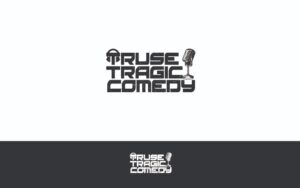
Each time a novel is made into a movie, critics split hairs over how faithful the movie is to the book, whether divergences, where they occur, are warranted, whether the extra bits add layers to the original or are mere tinsel. Some shift in meaning is bound to occur in the transition from word to image. But it is only in the hands of a master director that the adapted text gets a life of its own — think of, say, Pather Panchali, based on Bibhutibhushan Bandopadhyay’s novel, where Ray makes precise use of the opportunities offered by the visual medium to expand the meanings of the written text so that the movie also emerges as an independent work of art.
The same would hold true of the reverse process — of the transition from movie to novel. With the visual references gone, the writer has to stoke the reader’s imagination through words and the success of the book as an autonomous entity depends on how skilfully she does that. Guillermo del Toro is an exceptional director: not so much as an author, if Pan’s Labyrinth, the novel based on his 2006 movie of the same name, is anything to go by. The novel is unimpressive even if you don’t compare it with the movie. And alack if the movie is playing in your head as you read the book: the effect is of end of enchantment, of waking up in a bleached noon after a lush dream.
Lost ambiguities
Perhaps del Toro and his co-author, Cornelia Funke, did plan the novel as a supplement to the movie rather than one meant to be read without the reference. They begin each section with an illustration of a matching scene from the movie. So Ofelia is solidly Ivana Baquero from the film while the Faun is unmistakably that gnarled, horned, hooved creature with glowing blue eyes. The illustrations inhibit the imagination, trapping it within the film and making comparison inevitable.
The dialogues match too. What is deftly left unsaid in the film is laid out here in banal sentences such as this: “Ofelia didn’t want to eavesdrop, but she couldn’t help listening. To listen… after all, that’s what being a child is about.” The other major additions are the backstories: of the ruined millhouse in the forest where Captain Vidal sets up his camp; of Ofelia, whose tale as a lost princess of the underworld is further elucidated; of Ofelia’s dead father; of the Faun’s past life. The last, narrating how the Faun loved and lost a mortal woman, is the most twee: it erodes his aura of unpredictability by over-explaining him (and this, in short, is the major defect of the entire novel). The other stories, rambling and digressive, are best skipped.
Only a few sentences scattered here and there break out of the rut and remind you of the ambiguities that gave the movie its edge. For instance, the Faun, who is Ofelia’s guide to the lost realm, is anything but a kindly guardian angel. For one, given his name, you cannot be unaware of the randiness that is the characteristic trait of this half-man, half-goat creature. Is his interest in Ofelia, who is on the cusp of knowledge and adulthood, wholly innocent? And then del Toro’s Faun is not only manipulative but also given to sudden bursts of fiery anger. So you nod knowingly when the book says, “In her heart Ofelia knew that the Faun wouldn’t understand [her compulsions].”
Forbidden fruit
With films like Pan’s Labyrinth and Shape of Water, del Toro has built for himself a reputation as the presenter of the rebellious fairytale. While having elements of the fantastic, his stories constantly undercut our expectations of the genre by creating a world where reality keeps intruding in all its brutality. The violence of the real world doesn’t falsify the magical but neither does it leave the fairy realm untarnished. del Toro draws from literature, myth, films, visual arts to create a complex network of intertextuality that resists any attempt to pigeonhole the story.
Ofelia, for instance, is partly Alice slipping through the hole, partly Dorothy from Wizard of Oz with her shiny red shoes, partly Persephone who tastes the forbidden fruit. What Ofelia shares with all these women, and with Eve, is her defiance — of her mother, of Captain Vidal, of even the Faun. This also links her with the rebels fighting the fascist regime in Spain, as well as with the director, who takes on the traditional form of the fairytale to twist it around. These references work visually in the movie — most notably in the scene where Ofelia’s plump red lips bite into the plump red grape in the scary Pale Man’s chamber. This is at once the pivotal symbolic moment when the child becomes a woman, and a realistic nod at the fasting masses and feasting monsters of fascist Spain. All such subtleties are lost in the density of the novel, with its stories within stories within stories, which say too much and nothing at all.
The more I read the novel the more I missed the movie. And then the eerie lullaby from the movie kept playing on a loop inside my head and I gave up on the book.
Pan’s Labyrinth: The Labyrinth of the Faun; Guillermo del Toro & Cornelia Funke, Bloomsbury, ₹550






